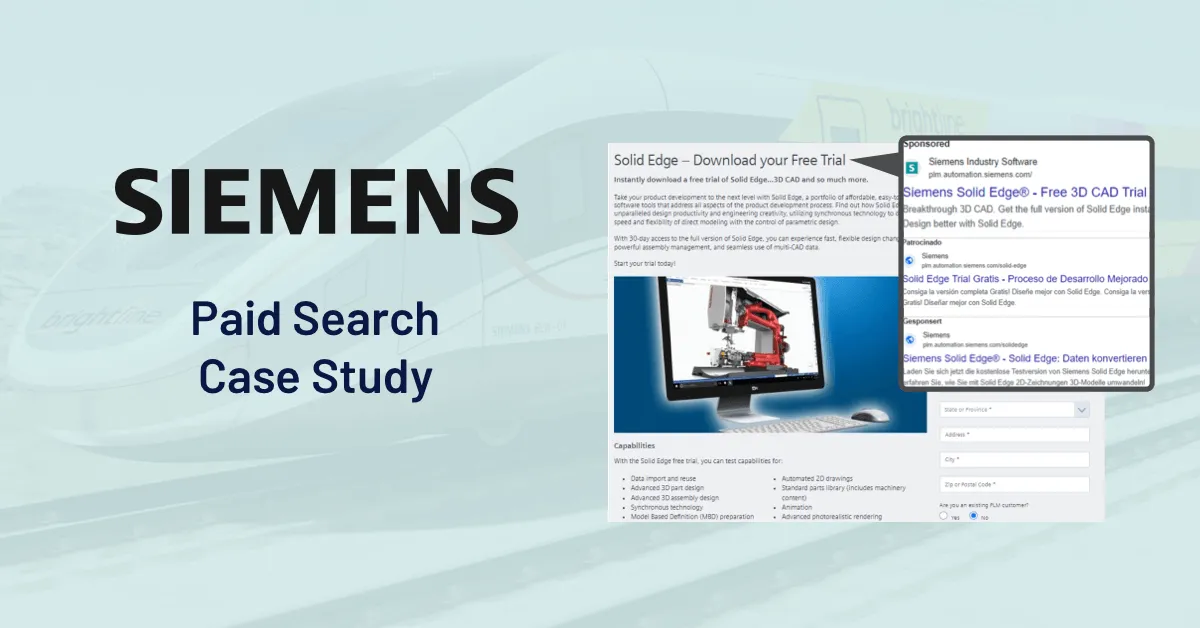Web Page Design

Web page design is a cornerstone of establishing a strong online presence, combining aesthetics, functionality, and user experience to deliver an impactful digital space.At its heart, web design is about creating an environment where users can easily navigate, engage with content, and take meaningful actions that align with business goals.While visual appeal is important, a truly effective design also prioritizes usability and functionality to ensure a seamless experience for all users.Visual elements play a significant role in shaping a website’s overall impression.Typography, for instance, contributes not only to readability but also to the personality of a brand.Choosing fonts that balance style and clarity can guide users through content intuitively.Similarly, color schemes set the tone for a site, evoking specific emotions while reinforcing brand identity.Beyond aesthetics, it’s crucial that colour choices meet accessibility standards to ensure readability for everyone, including those with visual impairments.High quality images and videos are essential tools for engaging users, making the content more dynamic and impactful.When paired with thoughtful layouts, these elements create a visually harmonious experience that keeps users interested and focused.Functionality, however, is the backbone of any successful web page.A well designed navigation system allows users to find what they need quickly, reducing frustration and improving satisfaction.Sites that load quickly also provide a better experience, keeping visitors engaged and positively influencing search engine rankings.Moreover, the structure of a website must be logical and well organized, helping both users and search engines understand the content.Device compatibility is another critical factor, as a growing number of users access the Internet through mobile devices.Websites that adapt seamlessly to different screen sizes and orientations create a consistent experience, which is especially important for businesses reliant on e-commerce.Usability is the bridge between visual design and functionality, ensuring that users can easily interact with a site without unnecessary complexity.Intuitive interfaces that require minimal effort to understand are key to retaining visitors and encouraging them to explore further.Accessibility is also a core aspect of usability, as designing for individuals with disabilities benefits all users by offering a more inclusive experience.For example, using descriptive alt text for images, keyboard friendly navigation and adequate colour contrasts ensures that everyone can interact with the site effectively.Additionally, providing clear feedback for user actions, such as confirmation messages after submitting a form helps build trust and clarity.To create websites that perform well across various devices, responsive design is a necessity.By employing flexible grids, scalable images, and adaptive layouts, designers can ensure that the user experience remains consistent whether someone is browsing on a desktop, tablet, or smartphone.Given the significant amount of web traffic generated by mobile devices, prioritizing mobile first design ensures that the most critical features are optimized for smaller screens.Regular testing across multiple devices and browsers is essential to catch and resolve compatibility issues, ensuring a seamless experience for all users.An effective web page design also integrates search engine optimization, aligning the website structure and content with best practices to improve visibility and search results.By incorporating relevant keywords naturally into headings, meta descriptions, and alt text, websites can attract the right audience.Technical optimizations such as faster load times, secure HTTPS connections, and clear URL structures further enhance the site’s search engine rankings.Combined with engaging high quality content, these SEO strategies ensure that a website not only looks great, but also performs well in driving organic traffic.Ultimately, successful web page design requires balancing creativity with strategy.By prioritizing visual appeal, usability, and functionality, businesses can create websites that resonate with their audience, encourage meaningful interactions, and support broader goals.Regular user feedback and performance analysis are essential to refine the design over time, ensuring the site continues to meet evolving user needs and expectations.A well designed website is not just a digital presence, it is a powerful tool for growth and engagement in an increasingly connected world.
Creating Effective and Engaging Websites
Web page design is crucial for communicating your business solutions or cause to the online world. It encompasses the planning, conceptualizing, and arrangement of content for the internet. Beyond the visual appeal, it also involves functionality and user-experience and user-interface design. This guide covers the essential components of web page design, emphasizing usability and best practices to ensure your website is both aesthetically pleasing and user-friendly, especially in the realm of e-commerce website design.
Key Components of Web Page Design
Visual Elements
Visual components define the look and feel of your site. They include:
- Typography: The choice of typography and fonts impacts readability and the overall aesthetic.
- Colors: A well-chosen, ADA-Compliant palette invokes emotions, represents your brand's identity and ensures the legibility for those with visual impairments.
- Shapes & Graphic Elements: Shapes and graphic elements can highlight important content and guide users visually.
- Layout: Logical arrangement of text, images, and other elements is crucial in the graphic design of a website.
- Iconography: These help guide users, allow them to scan a page quickly, improve brand recognition and add to the site's appeal.
- Images and Videos: High-quality visuals engage users and enhance content.
Functional Elements
Functional elements are vital for both user experience and SEO. They include:
- Navigation: Simple, intuitive navigation helps users find what they need quickly.
- User Interaction: Minimizing interruptions like pop-ups improves satisfaction.
- Speed: Fast-loading pages retain visitors and improve SEO.
- Site Structure: An organized structure aids both users and search engines.
- Device Compatibility: Ensuring your site works on various devices, crucial for e-commerce website design.
Why Usability Matters
Usability is about how easily users can navigate and use your site, directly influencing user satisfaction and conversions, which is especially important in ecommerce website design. Key usability aspects include:
- Intuitive Design: Easy-to-understand interfaces without requiring much instruction.
- Accessibility: Ensuring access for people with disabilities improves usability for everyone.
- Feedback: Providing immediate feedback for actions like form submissions or clicks.
Best Practices in Web Page Design
Responsive Design
Responsive design allows your website to adapt to different screen sizes and devices, critical for seamless user experiences across desktops, tablets, and smartphones. Techniques include using fluid grids, flexible images, and media queries.
Content-First Approach
Prioritizing content ensures your site delivers valuable information. Design around the content rather than fitting it into pre-designed templates, resulting in a more user-centric web page design.
Consistent Branding
Consistency in branding across your website builds trust and recognition. This involves using the same color palette, fonts, and iconography throughout the site, making your website professional and cohesive. A website’s design should be consistent with other marketing efforts like a company’s banner ad designs and landing page designs.
Regular User Testing
User testing provides insights into how users interact with your site, identifying usability issues and areas for improvement. Feedback is essential for informed design decisions to enhance user experience.
Ensuring Cross-Device Compatibility
Cross-device compatibility ensures your site works well on desktops, tablets, and smartphones. This is essential in the mobile-first world, particularly for e-commerce website design, where a consistent experience is expected.
Why Cross-Device Compatibility is Essential
With over 50% of web traffic being from mobile devices, your site must be accessible and functional on these platforms. Non-optimized sites suffer from high bounce rates and poor engagement, affecting SEO rankings.
Techniques to Achieve Compatibility
- Responsive Design: Flexible grids and layouts adjust to screen size and orientation.
- Mobile-First Design: Begin design with mobile screen-sizes to prioritize critical aspects on smaller screens.
- Regular Testing: Test on various devices and browsers to identify and fix issues.
Benefits of Compatibility
- Enhanced User Experience: Easy access and navigation across devices.
- Broader Reach: Attract a wider audience, including mobile-only users.
- Improved SEO: Mobile-friendly sites rank better in searches.
- Higher Conversions: A seamless experience boosts conversion rates.
All right, so we’ve got a ton of web design info to get through today. Looks like somebody’s ready to take on the online world. And we’re here to help craft a website that not only looks amazing, but actually works too. Today’s deep dive is going to focus on some excerpts from Texto Colado. It’s full of tips on building effective and engaging websites. And we’re going to unpack it all. What I found really interesting about Texto Colado is how much it emphasizes the balance between visual appeal and the site actually working. You can’t have one without the other. Right. Like imagine walking into a store that looks incredible, but it’s impossible to actually find anything. You’d probably just turn around and walk right out. I actually had that happen to be once at a clothing store. I just got so overwhelmed I left empty-handed. Exactly. And it’s the same for websites. A visitor might be drawn in by a beautiful design, but if they can’t find what they’re looking for or the website’s super slow or clunky, they’re going to bounce right off to a competitor. So Texto Colado breaks web design down into two main parts, visual and functional. Visual is stuff like color palettes, fonts, images, videos. Basically the overall aesthetic that reflects your brand and grabs your audience’s attention. But here’s the thing that I found really interesting. Choosing the right color palette isn’t just about what looks pretty. Oh yeah, you got to think about it. Colors can evoke strong emotions like blue is often linked with trust and stability, which is why a lot of financial institutions use it. But then you have green, which often represents peace and growth. That’s why it’s popular with eco-friendly brands. Oh that makes a lot of sense. So you’re kind of setting the mood or the tone for the whole user experience with your color choices. Now on the functional side, we’re talking the nuts and bolts of how the website actually works. Things like navigation, loading speed and overall structure of the site. Yeah, and that’s where clear and intuitive menus, a well-organized hierarchy of information and really fast loading times come into play. I’m curious, how much does website speed actually matter? We’re talking about fractions of a second here, right? Oh yeah, research has shown that even a delay of one second can lead to a big drop in conversions, which means fewer people are going to buy your products or services. Users have come to expect really quick results online and if your website doesn’t give them that, they’ll go somewhere else. Wow, I didn’t realize it was that crucial. It really emphasizes how important usability is. Especially when you’re trying to sell something online. Just think about your own experiences online. Have you ever landed on a website and immediately felt frustrated? Maybe you couldn’t find what you were looking for, the layout was confusing, or the pages took forever to load. Oh absolutely, it’s so frustrating. I usually just give up and go to a different website. Exactly, and that’s what we want to avoid. We want to keep visitors engaged and happy. That’s going to lead to more sales, more signups, and a more successful online presence overall. Okay, so how do we create this magical user-friendly website? Keckstil Kalado offers some great advice. And the first one that jumped out at me was responsive design. I’ve heard that term a lot, but I’m not really sure what it means. It’s pretty simple actually. Responsive design means your website looks and functions perfectly on all devices, like a desktop, laptop, tablet, or smartphone. So it’s about making sure the website adapts to different screen sizes. Exactly. This is done through stuff like fluid grids and flexible images. Imagine a fluid grid, like a container of water. The water adapts to the shape of the container, right? Well, a fluid grid does the same thing. It allows the website layout to adjust to different screen sizes. And flexible images resize themselves to fit the space without getting distorted. Oh that’s a great analogy. So instead of having a separate mobile version of your website, you have one design that works perfectly across all devices. Exactly. And that’s really important because more and more people are using the internet on their phones and tablets. In fact, Texto Colado states that mobile traffic now accounts for over half of all web traffic. Whoa, that’s more than half. So if your website isn’t optimized for mobile, you’re missing out on a huge chunk of your audience. Yeah, exactly. Now, let’s move on to another key best practice from Texto Colado, the content first approach. Okay, I’m intrigued. What does that even mean? It means prioritizing the information you want to convey. You design your website around that content. You don’t want to force your content into a pamphlet. Think about building a house. You wouldn’t start by choosing a fancy facade and then cram all your rooms and furniture in later, right? That would be a weird house. So for a website, the content is the foundation and the design is built around it. Exactly. This makes sure that your website is user-centric because you’re starting with what your audience needs and wants and then creating a design that best shows that information. That way, you make sure your site has a clear purpose, delivering that good content in a way that’s engaging and easy to understand. Yeah, it sounds like content first really puts the user’s experience first. And speaking of user experience, Texto Colado also mentions consistent branding. I’d love to hear what you think about that. Oh yeah, consistency in branding is so important for building trust and getting people to recognize your brand. Think about those big brands you know and love like Apple, Nike, Coca-Cola. They’ve all got that distinct look that you can instantly recognize everywhere. Their websites, their social media, even their advertising. You’re right. I can picture their logos and colors right now. And it’s not just about how it looks right. No, it goes deeper than that. Consistent branding makes things feel familiar and reliable. When people see the same colors, fonts, and images on your website and everywhere else, they start to build an association with your brand. It’s like creating a visual language just for your audience. So it’s about making a cohesive brand experience, one that goes beyond just the website. It’s about making sure your brand looks the same everywhere your audience might see it. Exactly. And this consistency makes people trust you more. When users feel like they know what to expect from your brand, they’re more likely to actually do stuff like buying something, signing up for a newsletter, or just spending more time on your site. Okay, so we’ve covered responsive design, content first approach, and consistent branding. What other good stuff does Texo Colado have for us? One that stood out to me was regular user testing. People often forget about this one, but it’s so important for making a website that’s easy to use. I can see how that would be valuable. What exactly does user testing involve? Basically, you get real people to use your website. And then they tell you what they think. You can watch how they navigate the site, see if there are any points where they get stuck or confused, and just get a general idea of what’s working well and what could be improved. Oh, so it’s like a focus group, but for your website. And you get to see real users in their natural environment. Exactly. And the best part is, it’s a process you can repeat. You test, gather feedback, make changes, and then test again. This helps you continuously make your website better, and make sure it’s always meeting your audience’s needs. That makes sense. It’s like a feedback loop. It keeps you on track, and helps you avoid those design mistakes that can frustrate users. Speaking of mistakes, let’s go back to cross-device compatibility for a sec. We talked about it with response design, but I think it’s worth going a little deeper, especially after you mentioned that stat about mobile traffic. Absolutely. Cross-device compatibility is more than just making sure your website looks okay on different screens. It’s about making sure everyone has a smooth and enjoyable experience, no matter what device they’re using to look at your site. Can you give me some examples of what that might look like? Sure. On a smaller screen, look a phone. You might want to simplify the navigation menu, or make the buttons bigger so they’re easier to tap. You might also need to make images and videos load faster on slower connections. It’s all about thinking ahead and making sure the experience is tailored to whatever device they’re using. So it’s not just about making the website smaller or bigger. You have to actually change the way it works and the content itself to suit the device and the user. It sounds like there’s way more to it than I thought. Oh yeah. There’s definitely a lot to think about. But it’s worth it. When you make your website compatible with different devices, you’re basically opening it up to a way bigger audience. You’ll also improve your SEO rankings because Google likes mobile-friendly websites. And most importantly, you’re making a better experience for everyone, which leads to more engagement, more conversions, and a better online presence overall. It seems like everything in web design comes back to usability, making sure the website is easy and enjoyable to use, no matter what device you’re on. Texto Colotto really emphasizes that. But as we’ve been talking about all this technical stuff, like grids and images and loading times, I’ve been thinking about something else, something that Texto Colotto kind of touches on but doesn’t really get into. Yeah, I think I know what you mean. We’ve been focusing a lot on how to build a functional and visually appealing website. But what about the emotional impact? How do we create a website that not only gives information but also inspires people and moves them? Yeah, exactly. It’s like the difference between reading a textbook and a novel. A textbook gives you all the facts and figures. But a novel can take you to another world and make you feel all kinds of emotions. I totally agree. A good website should do both. It should be clear and efficient with its information. But it should also connect with users on a deeper level. It should tell a story, evoke feelings, and leave a lasting impression. Do you have any examples of websites that do this well? I’m having trouble picturing how you would translate emotion into web design. Oh, absolutely. Think about websites for nonprofits. They often use really powerful images and storytelling to make people feel empathy. And that inspires people to take action or look at travel company websites. They use amazing photos and videos to basically transport you to these exotic destinations. It makes you feel that wanderlust. That’s a great point. But it’s not just about the visuals, is it? The way the content is written and the overall tone of the website also matters. Oh, for sure. The language, the stories you tell, even the fonts you choose, it can all play a role in shaping how the user feels. It’s all about creating one big cohesive narrative that really resonates with your audience and makes them feel something. So as we wrap up our deep dive into Texto Colato, the key takeaway is to approach web design with both a creative and a user-centric mindset. We had to think about the technical side of things. But we can’t forget about the emotional impact either. Exactly. It’s about finding that balance, where function meets art and information meets inspiration. And at the end of the day, it’s about making a website that not only does what it’s supposed to do, but also makes a positive and memorable impact on anyone who visits. It’s been a super interesting journey into the world of web design, thanks to Texto Colato and to your expertise. I feel like I understand way better what it takes to create a really effective website. Of course. I always love diving into these topics and sharing what I know. And just remember, the best websites are the ones that are constantly changing and adapting to what users need. So keep experimenting, keep learning, and always keep the user in mind. If you do that, you’ll be well on your way to creating a website that really stands out. And that is it for today’s deep dive. We’ll be back soon with another deep dive to help you make even better content.
FAQ
An effective web page design includes a clear and intuitive layout, compelling visual hierarchy, user-friendly navigation, responsive design, fast loading times, and high-quality content. It should align with the brand’s identity, deliver a seamless user experience across devices, and drive conversions by incorporating calls-to-action and relevant information.
SEO plays a crucial role in web page design by enhancing visibility and search engine rankings. Integration into the design process involves incorporating SEO best practices such as optimizing page speed, using keyword-rich meta tags, creating clean and crawlable site architecture, and ensuring proper use of header tags. Additionally, content is optimized for relevance and readability, and technical aspects like alt text for images are included to support search engine indexing.
For high-traffic sites with complex functionalities, the design process focuses on scalability, performance optimization, and robust backend integration. This involves employing efficient coding practices, optimizing assets for fast loading, and implementing caching strategies. The design is tested under load conditions to ensure stability and responsiveness, and scalable architecture is used to handle increased traffic without compromising performance.
Incorporating user feedback involves a structured approach that includes user research, usability testing, and iterative design. Initial prototypes and wireframes are tested with representative users to gather feedback on usability and design elements. Based on this feedback, design iterations are made to address user needs and preferences. Continuous feedback loops are maintained throughout the design process to ensure that the final design aligns with user expectations and improves the overall user experience.




